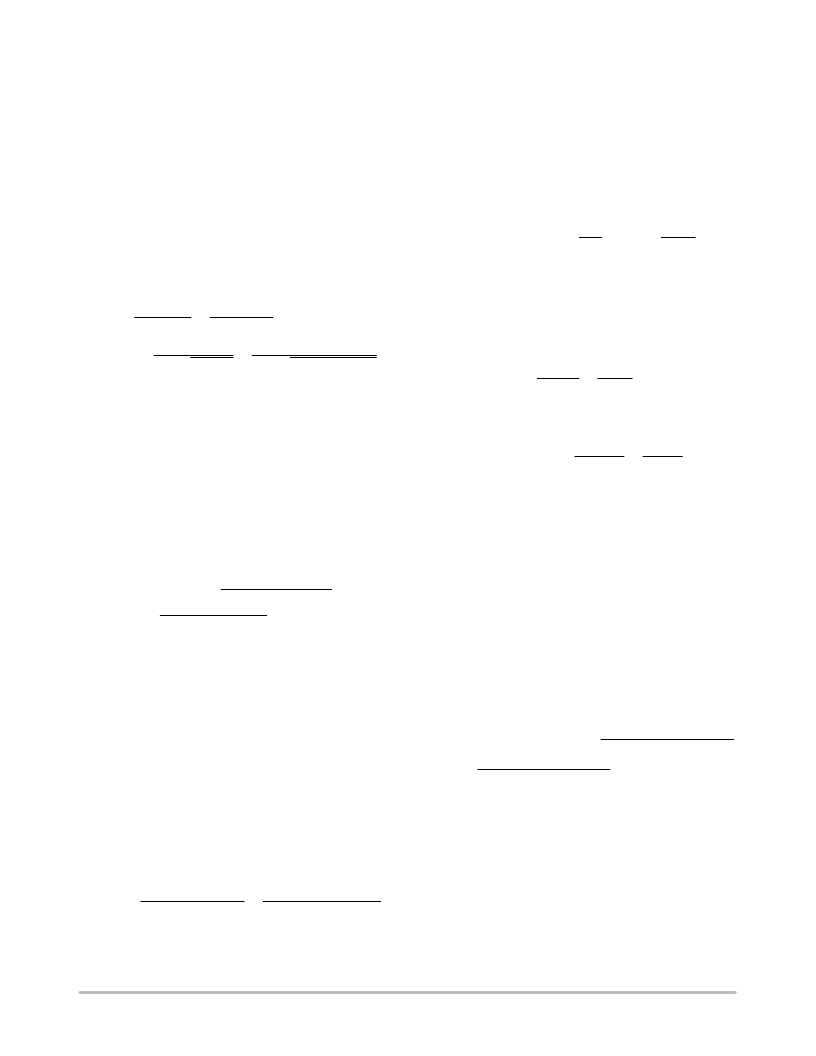- 您現(xiàn)在的位置:買賣IC網(wǎng) > PDF目錄378405 > AND8079 (ON SEMICONDUCTOR) A Low Cost DDR Memory Power Supply Using the NCP1571 Synchronous Buck Converter and a LM358 Based Linear Voltage Regulator PDF資料下載
參數(shù)資料
| 型號: | AND8079 |
| 廠商: | ON SEMICONDUCTOR |
| 元件分類: | 基準電壓源/電流源 |
| 英文描述: | A Low Cost DDR Memory Power Supply Using the NCP1571 Synchronous Buck Converter and a LM358 Based Linear Voltage Regulator |
| 中文描述: | 一種低成本的DDR記憶體電源使用NCP1571同步降壓轉(zhuǎn)換器和基于線性穩(wěn)壓器1 LM358 |
| 文件頁數(shù): | 4/20頁 |
| 文件大小: | 150K |
| 代理商: | AND8079 |

AND8079/D
http://onsemi.com
4
Component Selection
Input Inductor
The input inductor (L
IN
) is used to isolate the input power
supply from the switching portion of the buck regulator. L
IN
also limits the inrush current into the bulk input capacitors
and limits the input current slew rate that results from the
transient load. The inductor blocks the ripple current and
transfers the transient current requirement to the bulk input
capacitor bank.
The design equations for L
IN
are listed below and for
connivance an inductance of 1.0 H is chosen. The cut-off
frequency of the second order LC filter provides adequate
attenuation for the 200 kHz switching frequency of the
NCP1571.
V
(dI dt)Max
10 A
LIN
5 V
2.5 V
5 s
1.25 H
f
3db
1
LINCIN
2
216 Hz
1
2
1 H
5400 F
where:
L
IN
= input inductor
C
IN
= bulk input capacitor(s)
dI/dt = 10 A in 5.0 s
Input Capacitors
The input filter capacitors provide a charge reservoir that
minimizes the supply voltage variations due to the pulsating
current through the MOSFETs. The input capacitors are
chosen primarily to meet the ripple current rating of the
capacitors.
The design equation is listed below.
ICin(RMS)
D
(1
D)
Iout2
.5
(1
.5)
102
5 A
where:
D = duty cycle = V
OUT
/V
IN
= 2.5 V/5.0 V = 0.5
I
OUT
= maximum output current
The Rubycon 10 V 1800 f capacitors have a ripple
current rating of 2.55 A. Thus only 2 of the capacitors are
needed to meet the ripple requirements; however, 3
capacitors were chosen to be conservative.
Output Inductance
The main criterion in selecting the output filter inductance
(L
OUT
) is to provide a satisfactory response to the load
transients. The inductance affects the output voltage ripple
by limiting the rate at which the current can either increase
or decrease. The design equation used for selecting L
OUT
is
listed below. A 2.2 H inductor was chosen for the design.
(VIN
VOUT)
I
2.5 H
LOUT
tr
(5 V
2.5 V)
10 A
10 s
where:
tr = output transient load time
Output Capacitors
The output capacitors are selected to meet the desired
output ripple requirements. The key specifications for the
capacitors are their ESR (Equivalent Series Resistance) and
ESL (Equivalent Series Inductance). In order to obtain a
good transient response, a combination of low value/high
frequency ceramic capacitors and bulk electrolytic
capacitors are placed as close to the load as possible.
The voltage change during the load current transient is:
VOUT
IOUT
IOUT
ESL
t
ESR
tr
COUT
ESR
Empirical data indicates that most of the output voltage
change that results from the load current transients is
determined by the capacitor ESR; therefore, the maximum
allowable ESR can be approximated from the following
equation.
ESRmax
VOUT
IOUT
75 mV
10 A
7.5 m
The number of capacitors is calculated by using the
equation listed below.
Number of capacitors
ESRCAP
ESRmax
19 m
7.5 m
2.5
The ESR of the Rubycon 6.3 V 1800 F capacitors is
specified at 19 m ; therefore, 3 capacitors are used in the
design.
MOSFET Selection
The output switch MOSFETs are chosen based on the gate
charge/gate-source threshold voltage, gate capacitance, on
resistance, current rating and the thermal capacity of the
package. In this DDR design, the MOSFETs were chosen for
economical reasons and have a current and power rating that
is much better than needed for this design. In addition, the
MOSFETs selected were verified by measuring the thermal
characteristics of the devices on the PCB
.
MOSFETs is given below.
P
IMAX2
RDS(ON)
D
IMAX
VDS
Tr
FS
2
IMAX
VDS
Tf
FS
2
where:
T
r
= rise time or turn-on time of MOSFET
T
f
= fall time or turn-off time of MOSFET
F
S
= switching frequency
相關(guān)PDF資料 |
PDF描述 |
|---|---|
| AND8079D | A Low Cost DDR Memory Power Supply Using the NCP1571 Synchronous Buck Converter and a LM358 Based Linear Voltage Regulator |
| AND8085 | An Introduction to FST |
| AND8085D | An Introduction to FST |
| AND8090 | AC Characteristics of ECL Devices |
| AND8090D | AC Characteristics of ECL Devices |
相關(guān)代理商/技術(shù)參數(shù) |
參數(shù)描述 |
|---|---|
| AND8079D | 制造商:ONSEMI 制造商全稱:ON Semiconductor 功能描述:A Low Cost DDR Memory Power Supply Using the NCP1571 Synchronous Buck Converter and a LM358 Based Linear Voltage Regulator |
| AND8085 | 制造商:ONSEMI 制造商全稱:ON Semiconductor 功能描述:An Introduction to FST |
| AND8085D | 制造商:ONSEMI 制造商全稱:ON Semiconductor 功能描述:An Introduction to FST |
| AND8090 | 制造商:ONSEMI 制造商全稱:ON Semiconductor 功能描述:AC Characteristics of ECL Devices |
| AND8090D | 制造商:ONSEMI 制造商全稱:ON Semiconductor 功能描述:AC Characteristics of ECL Devices |
發(fā)布緊急采購,3分鐘左右您將得到回復。